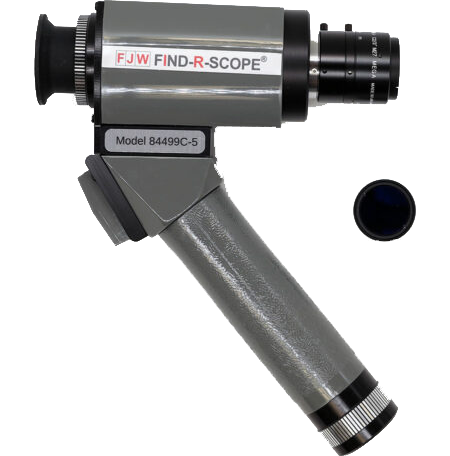

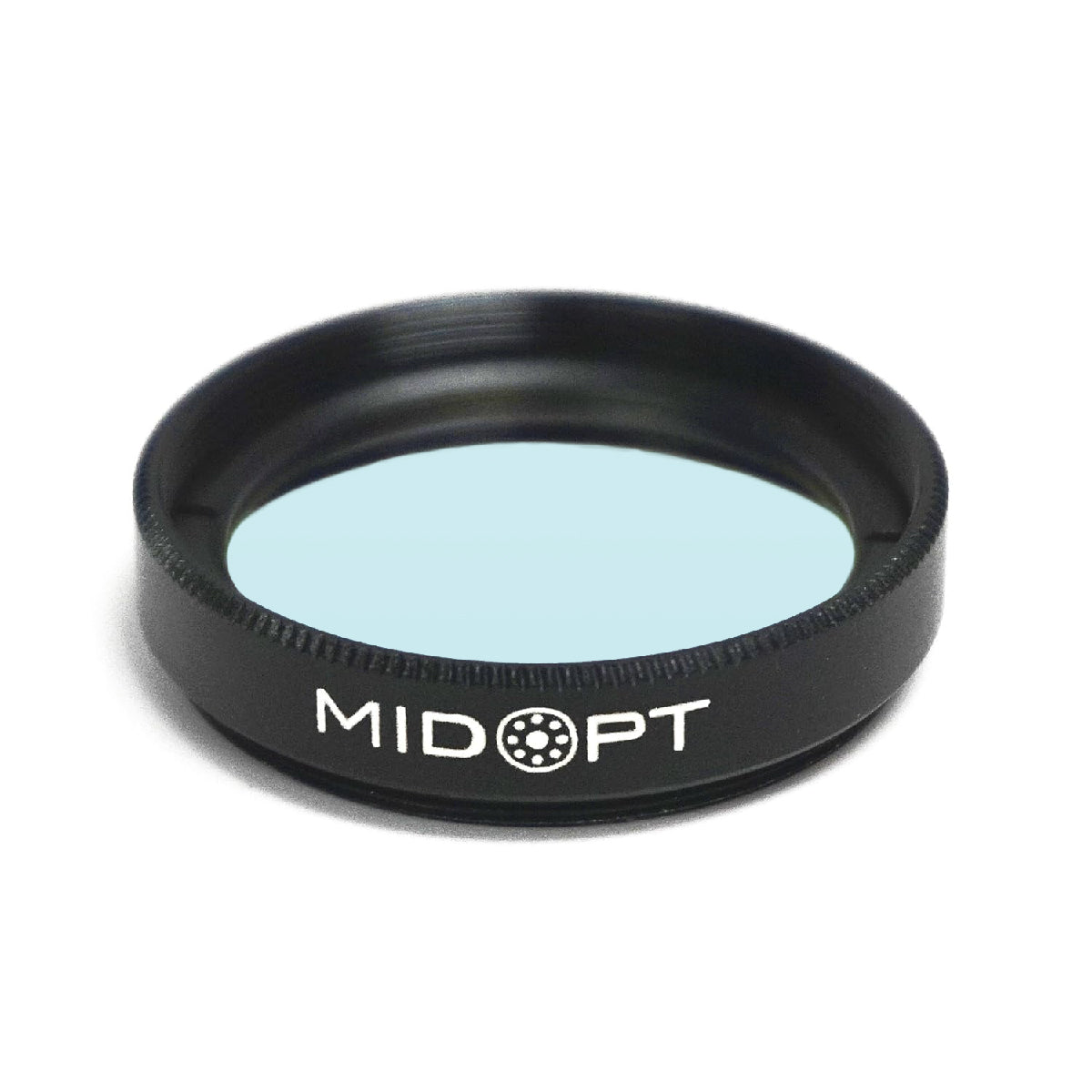
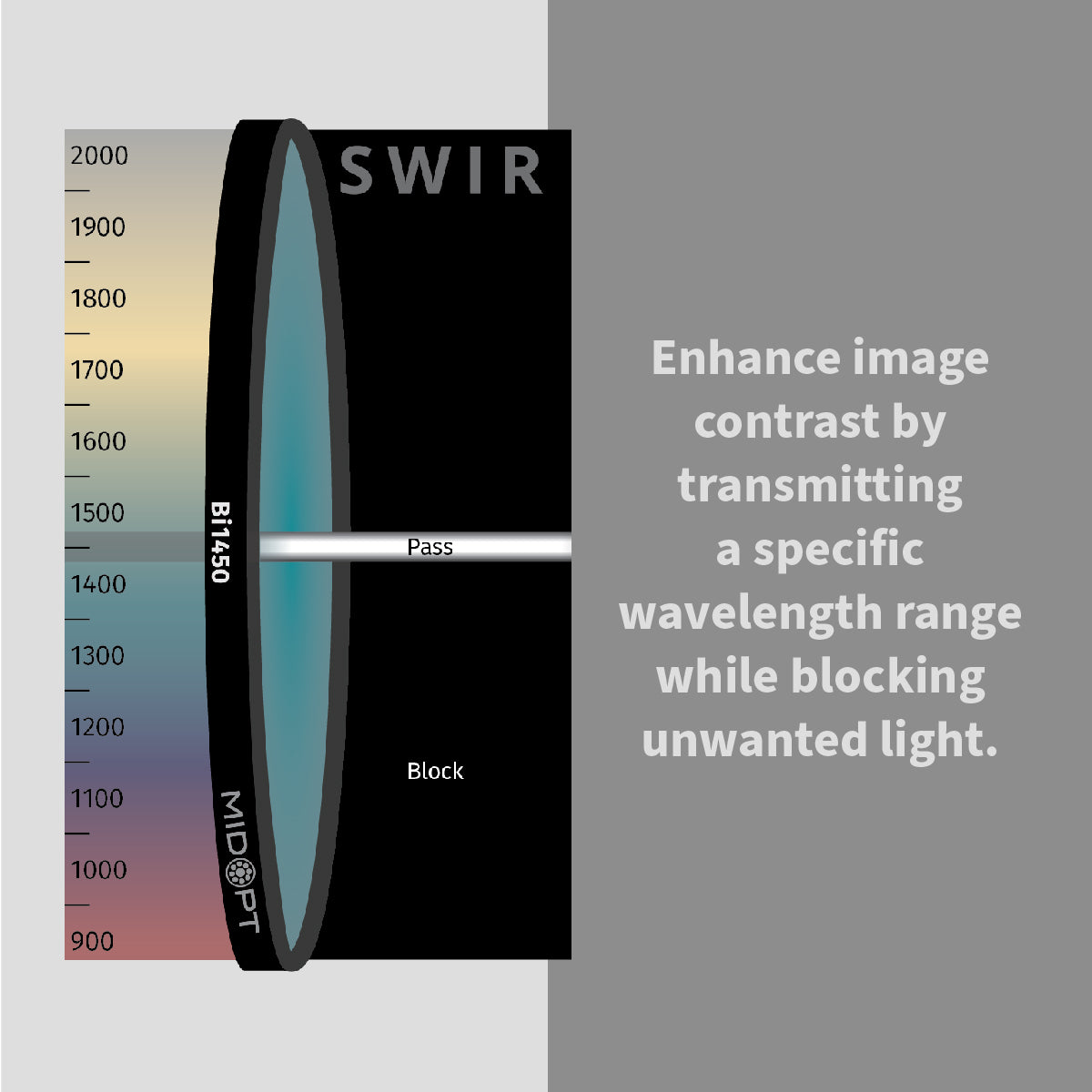
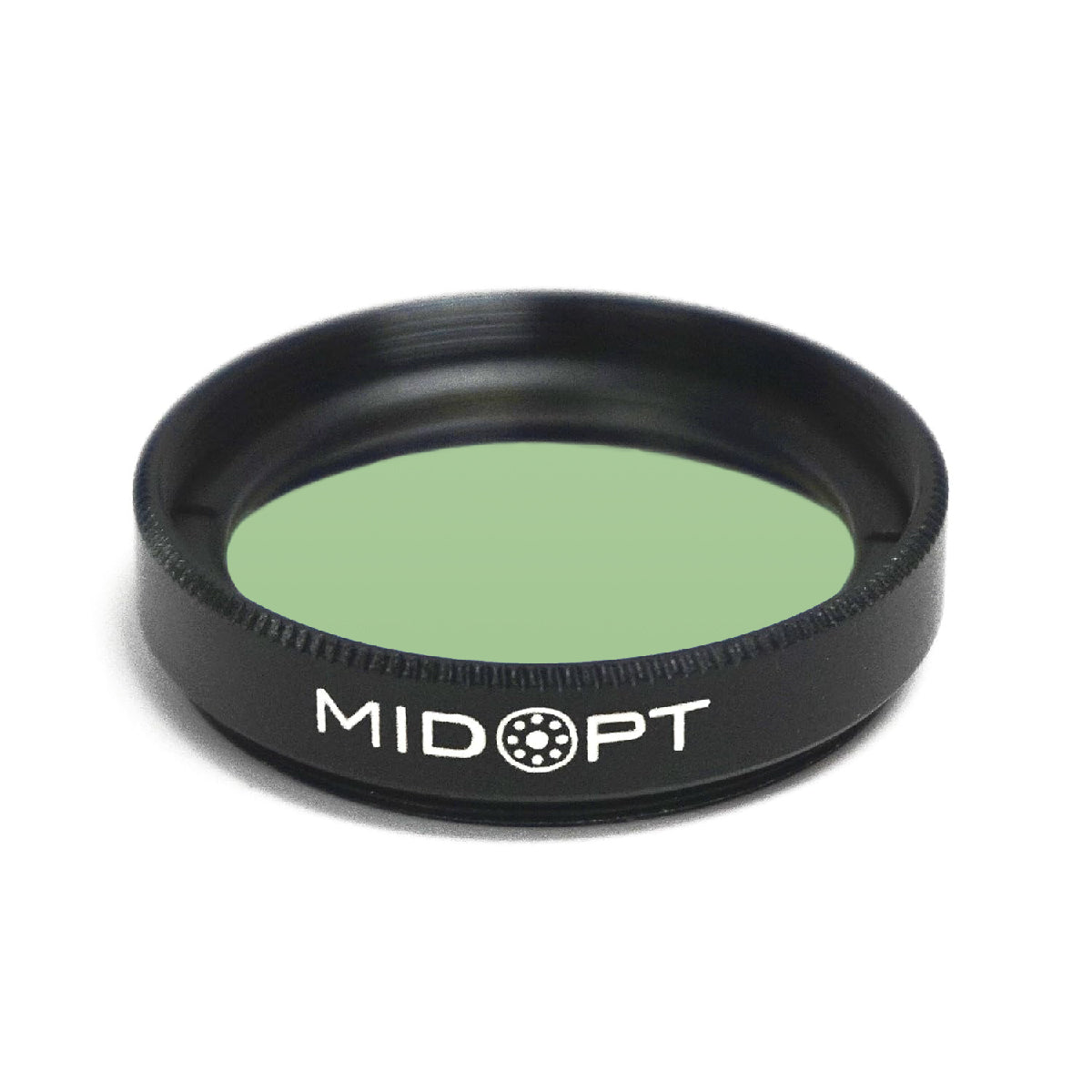
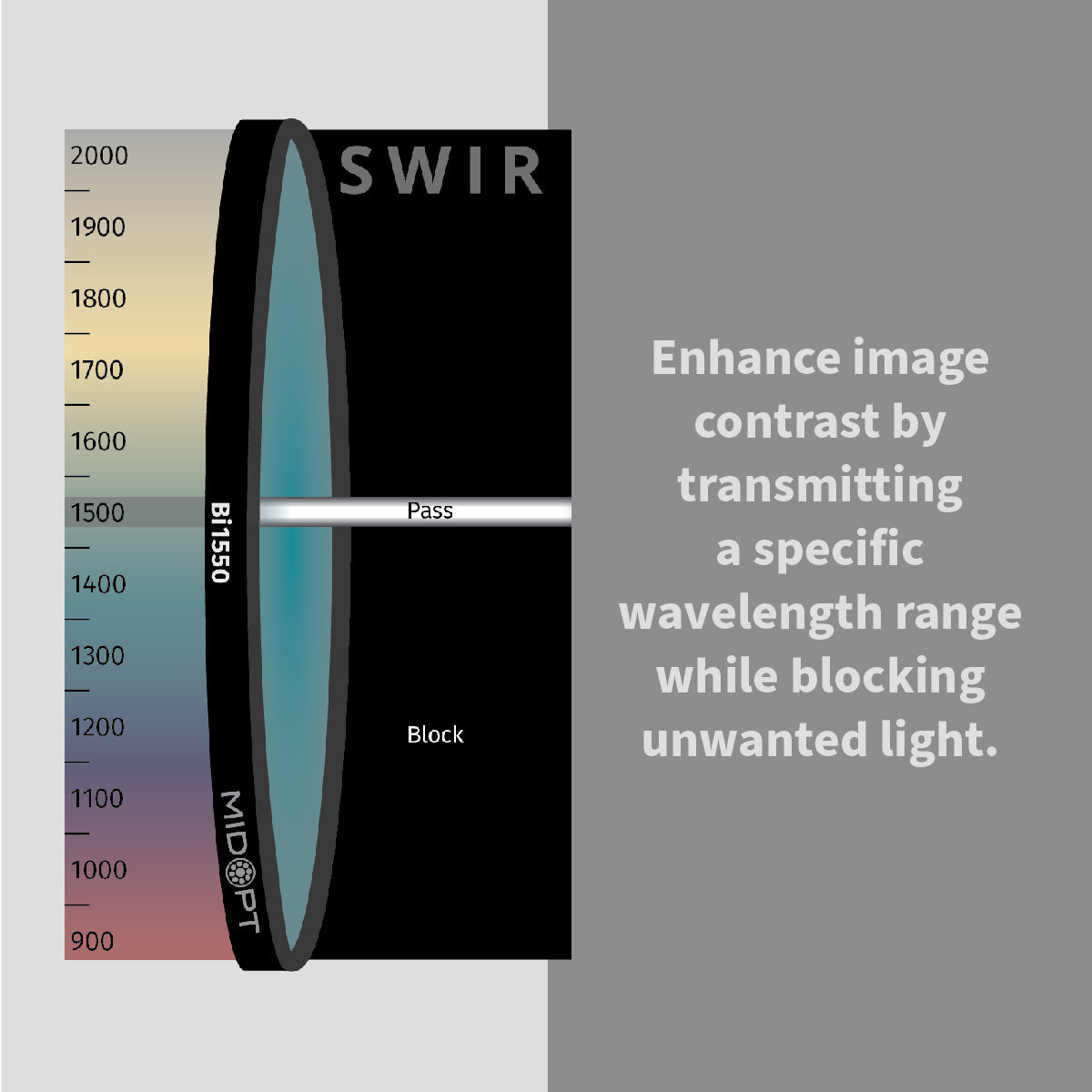
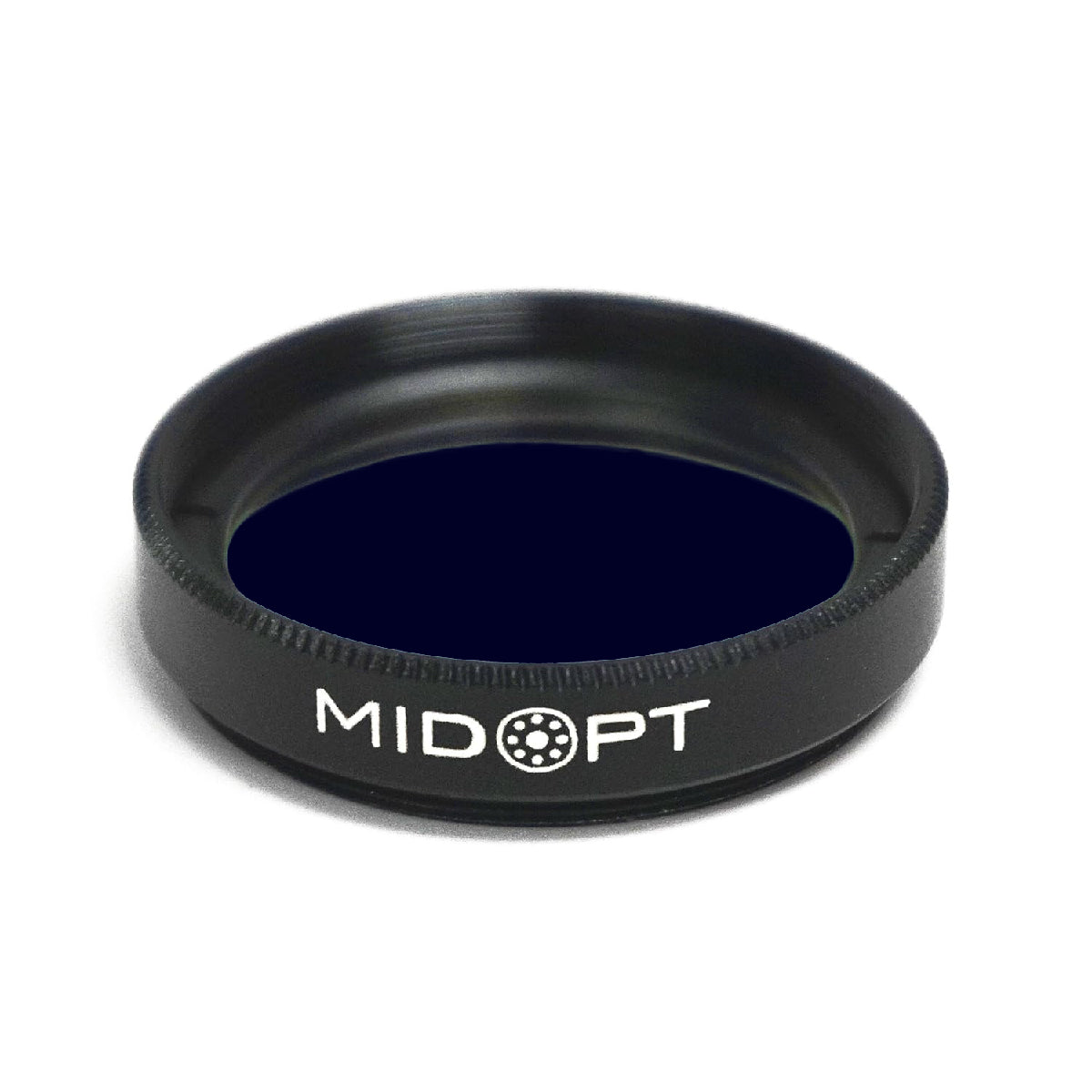
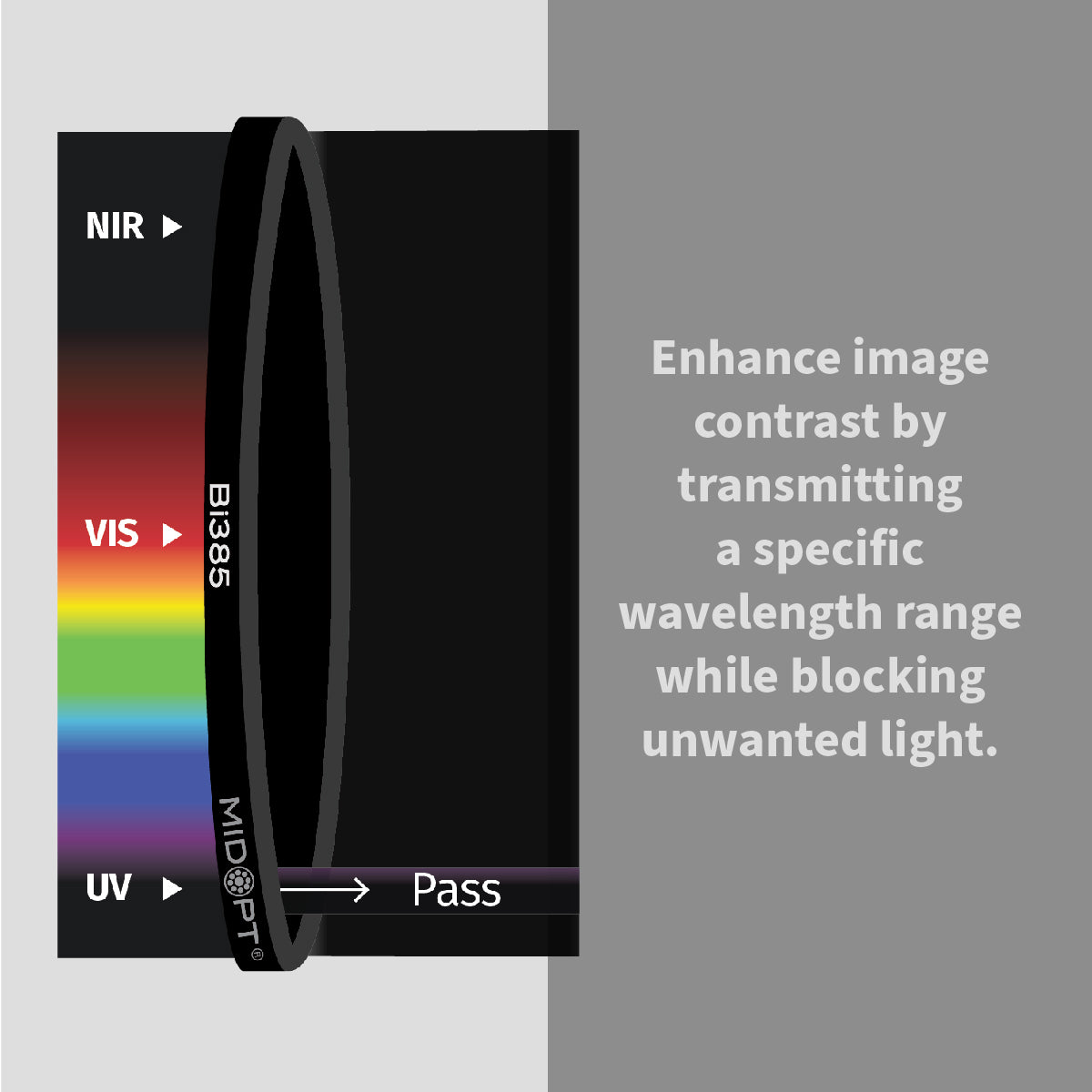
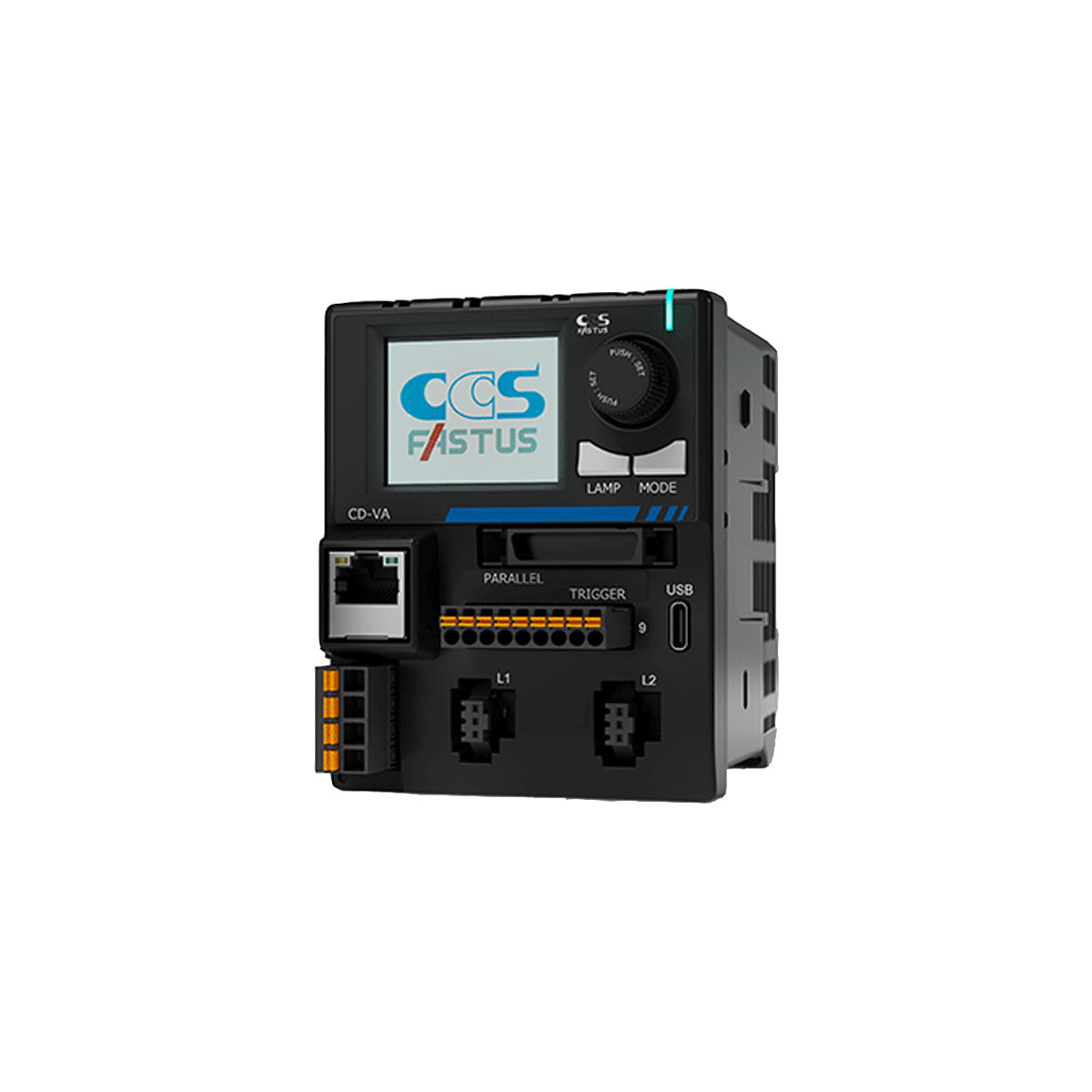

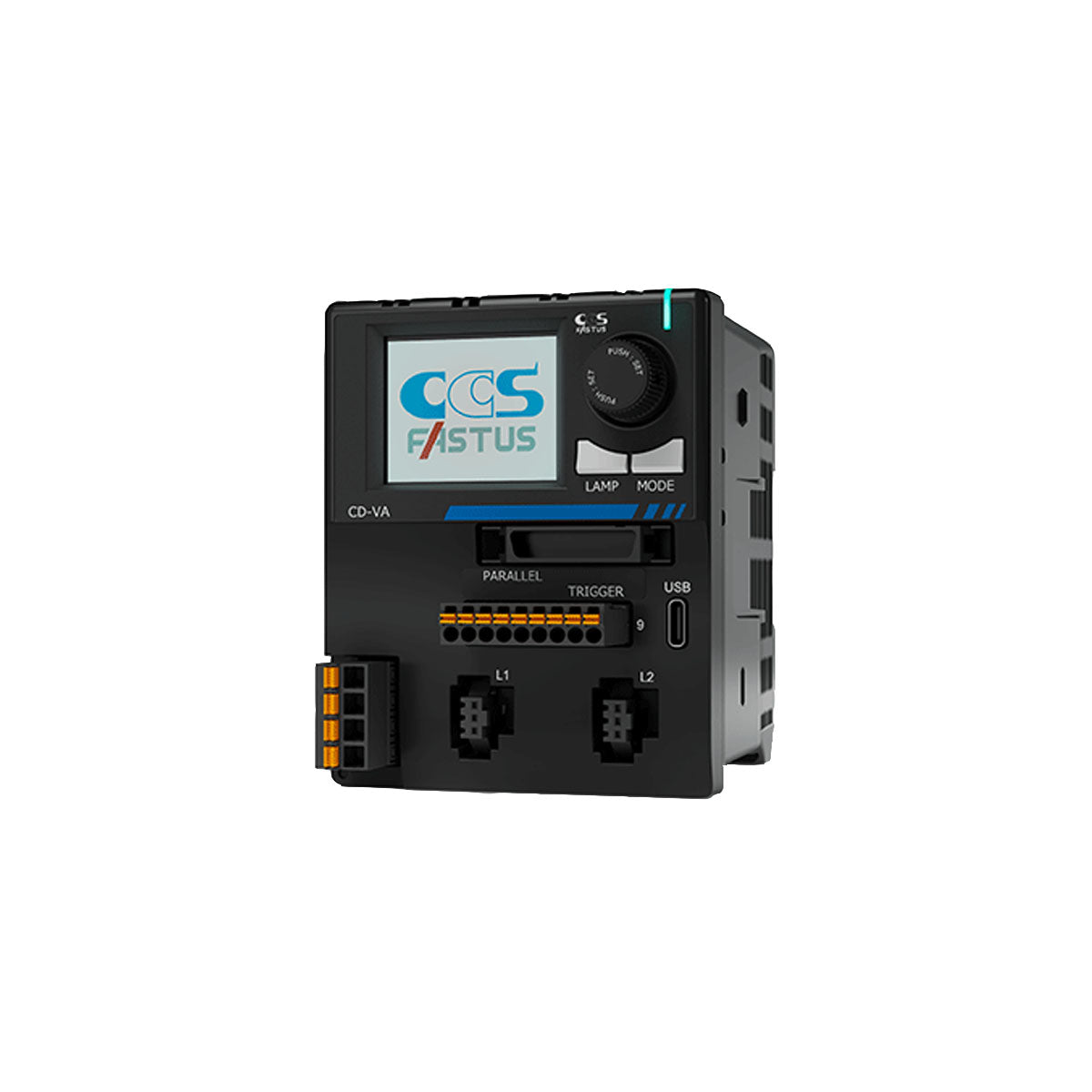
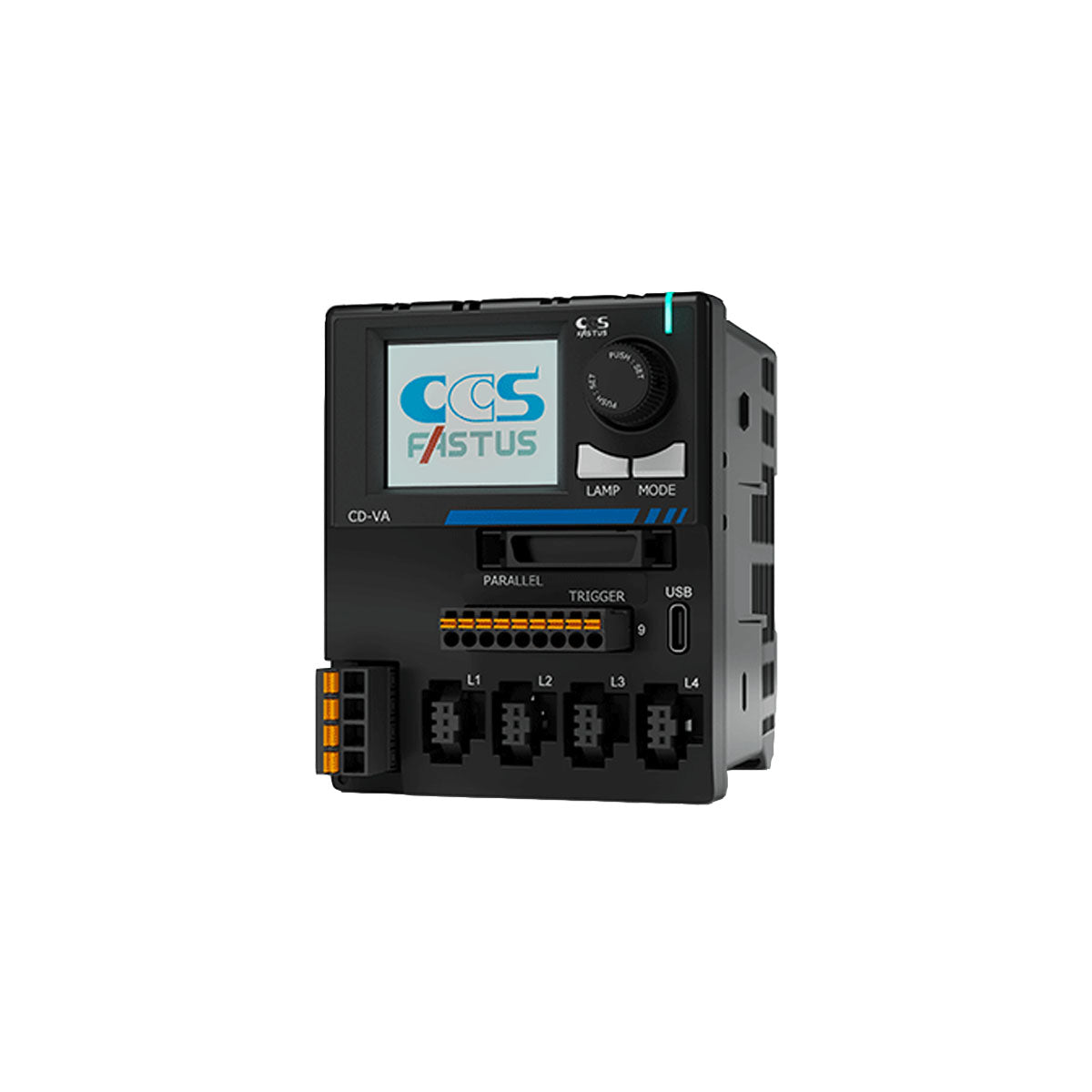

In machine vision, image quality is everything. Whether a system is tasked with inspecting tiny components, reading barcodes at high speed, verifying assembly quality or guiding robots with absolute precision, the camera can only make decisions based on the light it receives. That’s why optical filters – a sometimes overlooked part of a vision system – play a critical role in ensuring accurate, repeatable imaging.

Many LED light sources emit light in a Gaussian- or “bell-shaped” curve: strong in the center wavelengths, tapering off at the edges. For a filter to maximize image performance, its passband should closely emulate this Gaussian curve – matching the center, width and tails. When a filter’s passband is too broad or too “flat-topped,” more unwanted ambient light (outside the LED’s strong emission region) is allowed through, increasing noise and reducing contrast.

When building a vision system, selecting an optical filter that emulates the bell-shaped output (Gaussian transmission curve) of the illumination source's spectrum can directly influence image clarity, contrast and overall system performance.
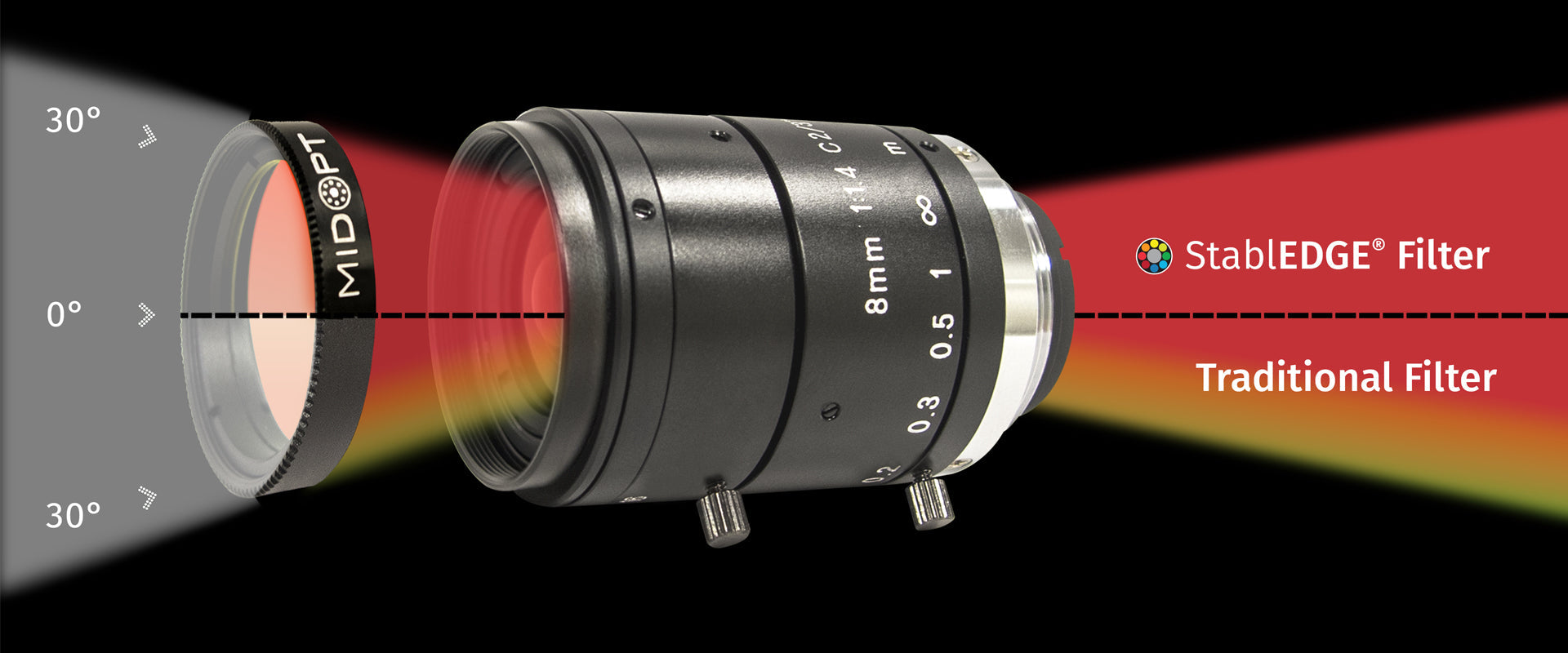
In machine vision, optical filters aren’t just add-ons, they’re essential tools for image accuracy. By carefully controlling which wavelengths pass through (and which don't), filters help maximize contrast, enhance color accuracy, highlight critical details and block ambient light that can compromise results.
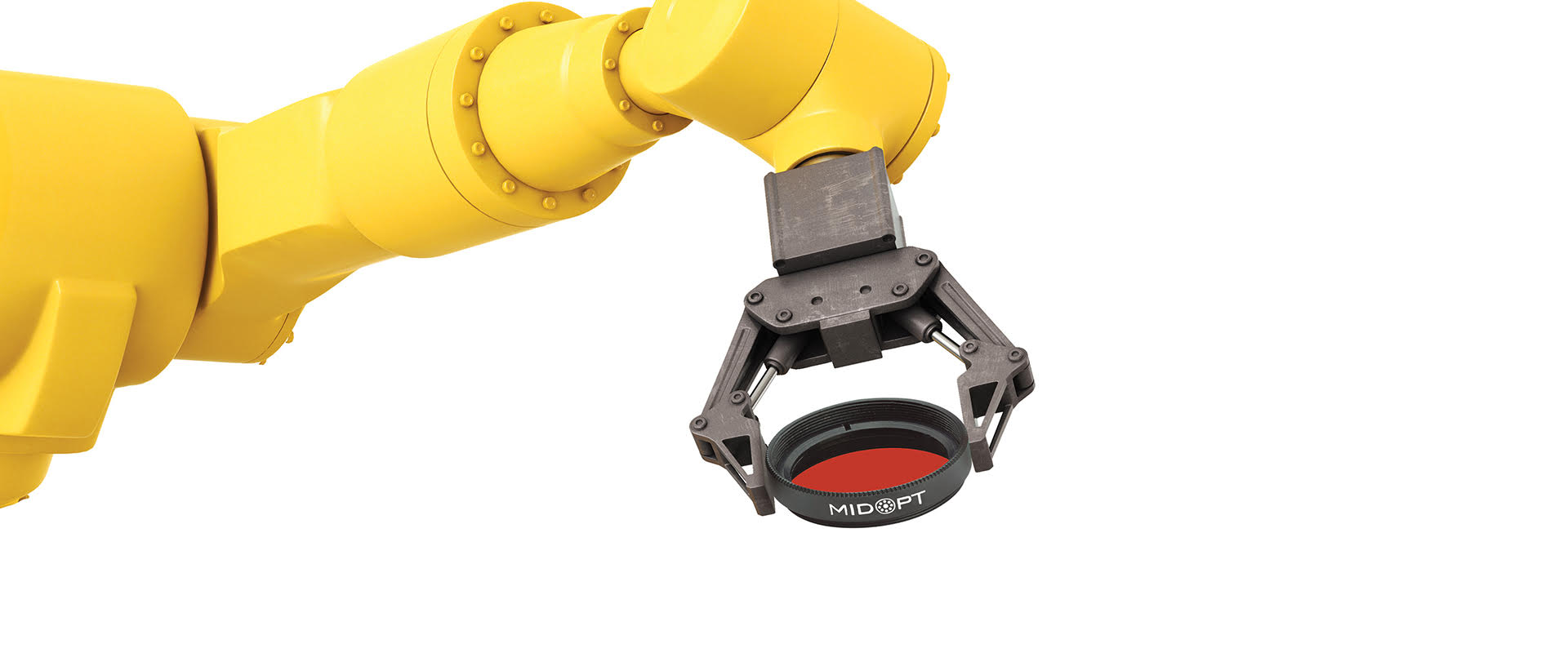
Optical filters are essential for achieving reliable, high-quality results in machine vision applications. They don’t just block or pass light – they enhance system performance by increasing contrast, improving color accuracy, reducing glare and isolating specific wavelengths. But not all filters are created equal.

Since the 1980s, MidOpt® has been a pioneering force in designing and manufacturing high-quality optical filters tailored specifically for industrial imaging and machine vision systems.

Triple Bandpass Filters are tools that allow users to go above and beyond traditional Normalized Difference Vegetation Index (NDVI) indicators to reinvent the way crop health is monitored and to collect more information than ever before.
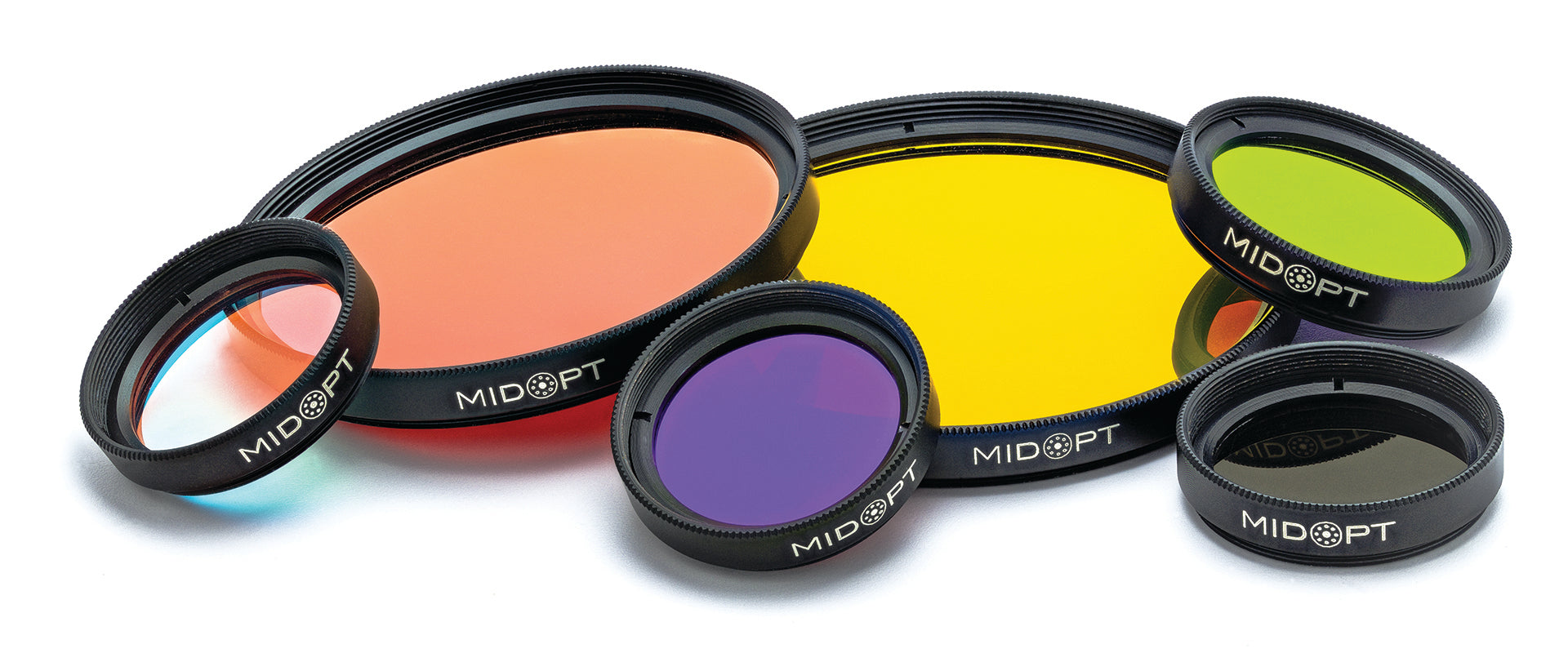
When developing a machine vision application, having the correct lighting to achieve maximum contrast is extremely important. Improper lighting can cause even the most advanced system to run slow or to have a high number of false rejects or accepts.

MidOpt® cutting-edge optical coatings for industrial imaging, including Anti-Reflection, Oleophobic and Hydrophobic, can protect the lens while improving image clarity and quality.

Choosing the right lens for a machine vision system involves more than focal length, resolution and working distance. The lens mount, the mechanical interface between the camera and lens, is one of the most important factors in ensuring proper imaging performance. The mount not only affects compatibility, but also impacts back focal distance, sensor coverage, optical stability and the overall footprint of the system.

When building a machine vision system, one of the most-critical parameters to get right is working distance (WD) – the distance from the lens’ front surface (or mechanical housing) to the object being inspected. Getting this distance correct ensures sharp focus, accurate measurements and reliable defect detection.

When building a machine vision or surveillance setup, the sensor size of the camera is a foundational choice. But its full value isn’t realized unless its paired with the right lens. The wrong lens can waste resolution, ruin field of view or degrade image quality. Here’s how to ensure the lens matches the sensor – and optimizes the system.

When building a machine vision system, the camera and lighting often get most of the attention. But the lens – and specifically its aperture and DOF (depth of field) – plays just as important a role in achieving clear, reliable images.

In industrial imaging, lenses are fundamental components that shape how the camera captures the world. Among the many lens parameters, focal length plays a pivotal role in determining what and how much we see. Understanding focal length and its effect on the field of view (FOV) is essential for selecting the right lens for your application.
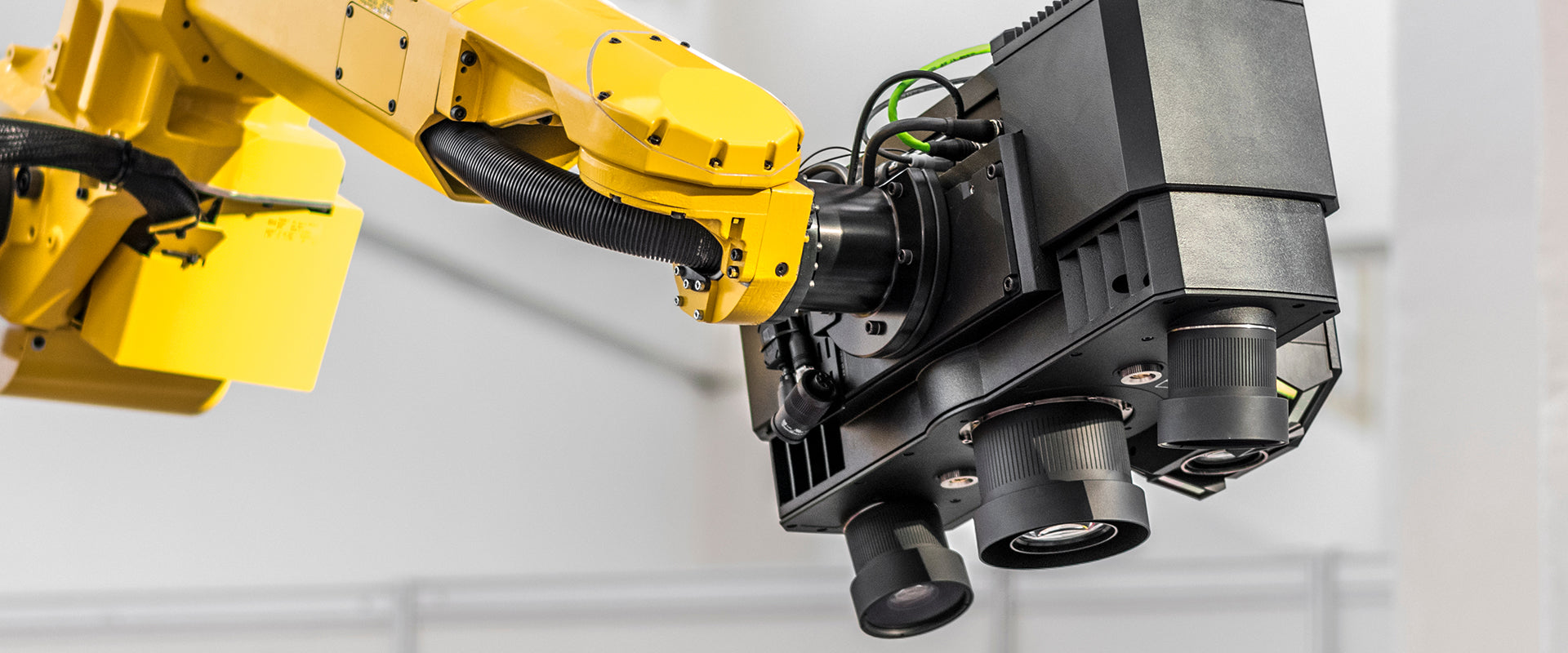
When designing a machine vision system, choosing the right lens is just as critical as selecting the right camera.

In today’s connected cities, intelligent traffic systems (ITS) and automatic number plate recognition (ANPR) are essential tools for improving safety, enforcing regulations and streamlining traffic flow. At the heart of these systems are machine vision cameras –designed to capture clear, precise images in complex, fast-changing environments.

In modern food and beverage manufacturing, getting it right means more than taste and packaging – it’s about consistency, safety and visual perfection. Machine vision cameras, when properly implemented, help ensure we catch defects, meet hygiene standards and keep up with consumer expectations. Below are ways high-quality imaging systems upgrade quality control.

The choice of camera interface plays a crucial role in machine vision system performance. The most common three interfaces are GigE, USB3 Vision and CoaXPress.

In industrial imaging, choosing the right camera for a machine vision system can significantly impact performance and accuracy. One of the most fundamental decisions is whether to use a monochrome or color camera.

When it comes to precision inspection and high-speed applications, line scan cameras are a cornerstone of modern industrial imaging.

As technology advances, line scan cameras are increasingly being adopted across a broader range of mainstream applications, driven by innovations in sensor technology, interface options, and the demand for more compact and efficient systems.
 Lighting
Lighting

Lighting is one of the most influential factors in machine vision performance. The right illumination can dramatically improve contrast, reduce noise and stabilize inspection results, while the wrong setup can cause missed defects, blurry images or inconsistent measurements.

There are many lighting techniques in machine vision, but backlighting – placing an illumination source behind the object, opposite the camera – is especially effective for certain applications. While front-lighting or diffuse dome lighting might illuminate a surface, backlighting creates a clean silhouette by allowing light to pass through or around the subject. This technique is particularly useful for edge detection, shape verification and measurement tasks.

Machine vision has come a long way, and LED lighting has been a key driver. As inspection speeds increase, product surfaces become more challenging and lighting conditions more difficult, high-quality LED lighting solutions have evolved to meet these demands. Below is a look at how LED lighting for vision applications has developed, and what modern systems demand.

Lighting determines how surfaces, textures and edges appear to the imaging system – and ultimately how well the application performs. Three of the most common lighting approaches are diffuse, direct and structured.

In machine vision, lighting is important. The quality, angle and consistency of illumination directly impact the ability of your vision system to capture accurate, reliable images. Among the many lighting considerations, one crucial yet often overlooked factor is uniformity – achieving even, consistent illumination across the entire field of view.

When it comes to building a successful machine vision system, lighting is just as critical as the camera or lens. Without the right lighting, even the most advanced imaging components can produce inconsistent or unreadable results. Whether you're inspecting tiny electronics, scanning barcodes on packaging lines or ensuring quality control in manufacturing, the right lighting solution makes all the difference.

Choosing the right lens for a machine vision system involves more than focal length, resolution and working distance. The lens mount, the mechanical interface between the camera and lens, is one of the most important factors in ensuring proper imaging performance. The mount not only affects compatibility, but also impacts back focal distance, sensor coverage, optical stability and the overall footprint of the system.

Lighting is one of the most influential factors in machine vision performance. The right illumination can dramatically improve contrast, reduce noise and stabilize inspection results, while the wrong setup can cause missed defects, blurry images or inconsistent measurements.

In machine vision, image quality is everything. Whether a system is tasked with inspecting tiny components, reading barcodes at high speed, verifying assembly quality or guiding robots with absolute precision, the camera can only make decisions based on the light it receives. That’s why optical filters – a sometimes overlooked part of a vision system – play a critical role in ensuring accurate, repeatable imaging.

Innovations in industrial imaging since 1969
FJW Optical has a rich history of innovation in the optical industry. Early on, the company was a leader in manufacturing optical components for military applications and grew to pioneer the development of user-friendly infrared viewers, including the iconic Find-R-Scope. FJW expanded into telecommunications with the rise of fiber optics, and today remains on the forefront of technological advancements with the SWIR View, a handheld viewer designed for various applications in the short-wave infrared spectrum.


